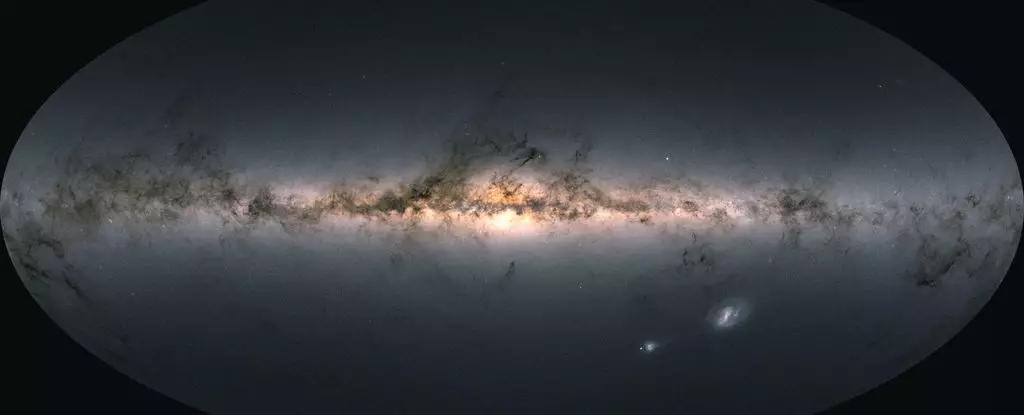Recent astronomical revelations suggest that the collision of the Milky Way with its neighboring dwarf galaxy, the Large Magellanic Cloud (LMC), might carry unforeseen consequences—notably, the potential for an encounter with a supermassive black hole. Deep within the confines of the LMC, researchers have detected indications of a colossal invisible entity potentially weighing in at around 600,000 times the mass of the Sun. Such a discovery challenges our understanding of the evolution of black holes and underscores the intricate dynamics within our galactic neighborhood.
As the LMC orbits the Milky Way on a spiraling trajectory, it is crucial to consider the implications of this looming galactic collision. If this hidden black hole exists, its eventual merging with the Milky Way presents a unique opportunity to study how black holes grow from initial star-sized masses to formidable entities, some even reaching billions of solar masses. This transition process, an aspect of black hole evolution that retains several mysteries, could potentially be illuminated by further investigations of such entities.
The groundbreaking findings were spearheaded by renowned astrophysicist Jiwon Jesse Han from the Harvard & Smithsonian Center for Astrophysics. The study has been submitted for publication in The Astrophysical Journal and is currently accessible on preprint servers like arXiv. The immense challenge in detecting black holes arises from their elusive nature; they do not emit light unless they are actively consuming matter, a process that generates observable radiation. Thus, researchers must employ ingenious techniques to uncover their existence.
Han’s team adopted an innovative approach, shifting focus from the conventional method of analyzing stellar orbits to investigating the peculiar motions of hypervelocity stars—objects that travel at speeds significantly faster than the average stars in their vicinity. The concept revolves around the Hills mechanism, which involves complex interactions among three celestial bodies: a black hole and two stars. In these interactions, one star is flung away at extreme speeds, leaving behind critical clues regarding the presence of unseen massive objects.
Leveraging data from the now-retired Gaia space telescope, which meticulously mapped the Milky Way for several years, the research team conducted a detailed analysis of 21 hypervelocity stars within the galaxy’s outer halo. Their analysis revealed that these stars exhibited traits consistent with the Hills mechanism, suggesting a connection to a supermassive black hole. The stars investigated were primarily of the B subtype, characterized by their immense heat and short lifespans, which further indicates that their high-velocity pursuits throughout space must have occurred relatively recently.
By tracking the stellar velocities and originating positions, the researchers meticulously ruled out alternative explanations for their acceleration. They were able to trace 16 of the examined stars, with seven tracing their origins back to the vicinity of Sagittarius A*, the recognized supermassive black hole at the heart of the Milky Way. However, notably, nine stars appeared to have journeyed from the LMC, reinforcing the hypothesis of an undetected black hole within this dwarf galaxy.
Currently, the LMC resides approximately 160,000 light-years from the Milky Way and is predicted to merge with our galaxy in about 2 billion years. This cosmic event is not merely a straightforward collision; instead, it constitutes a complex gravitational interplay that will irrevocably alter the existing galactic structure. The anticipated encounter promises to reveal details about black hole growth mechanisms, ultimately leading to the merging of the supermassive black holes at the core of both galaxies.
The journey toward answering crucial questions on black hole evolution involves not only the confirmation of the existence of this potential black hole but also setting the stage for further studies that could illuminate how these fascinating entities interact and grow over time. The prospect of observing such an incredible process—the merging of galactic entities and their black holes—holds great fascination, even as it lies far beyond our lifetimes.
The exploration of the intersection between the Milky Way and the Large Magellanic Cloud manifests as a critical arena for astronomical research. Future studies are essential to deepen our understanding of black hole dynamics and the broader narrative of cosmic evolution. As researchers persist in their investigations, they may unlock new facets of the universe’s enigmatic structures, enriching our perspective on the cosmos and the forces that shape it.


Leave a Reply